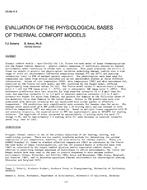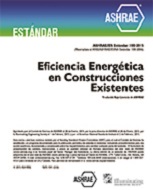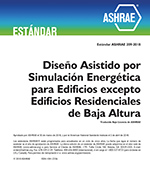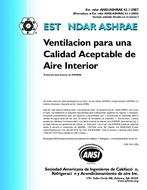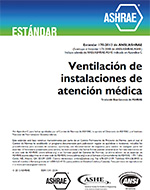Description
Thermal comfort models – specifically the J.B. Pierce two-node model of human thermoregulation and the Fanger Comfort Equation – predict comfort responses of individuals exposed to thermal environments under conditions of either rest or exercise. This paper evaluates the ability of these two models to predict the physiological variables underlying thermal comfort over a wide range of still air environments (effective temperature between 5°C and 45°C) and exercise intensities (rest to 85% of maximal aerobic capacity). The physiological data base used for comparison was taken from several published and as-yet unpublished studies at three different laboratories. Values of core temperature (TCR), skin temperature (TSK) and skin wettedness predicted by the Pierce two-node model, and PMV, predicted by the Fanger model, differed significantly from observed values (P<.05). The Pierce model tended to underestimate w (mean error = -.16) and TCR (mean error = -.31°C), and to overpredict TSK (mean error = .48°C) wettedness predictions were less accurate for high exercise intensity (6 to 8 met) than for rest, low exercise intensity (i to 3.5 met) or moderate exercise intensity (3.5 to 6 met). Accuracy was higher for males than females, and greater for females in the follicular phase of the menstrual cycle than females in the luteal phase. Errors in TSK predictions were also associated with exercise intensity but not associated with either gender or effective temperature. TCR predictions were significantly more accurate for females than for males. The average error associated with PMV predictions was 1.26 scaling units and was related to both effective temperature (ET*) and exercise intensity. Based on multiple linear regression with and exercise intensity, the expected error in PMV was approximately zero at ET=28°C for resting subjects. The magnitude of error increased by approximately .3 scaling units for each l°C change in ET, and by approximately 1.3 scaling units for each increase in exercise intensity level (e.g. rest to low).
Units: SI
Citation: Symposium, ASHRAE Transactions, 1988, vol. 94, pt. 1, Dallas, TX
Product Details
- Published:
- 1988
- Number of Pages:
- 15
- File Size:
- 1 file , 1.2 MB
- Product Code(s):
- D-DA-88-16-4
